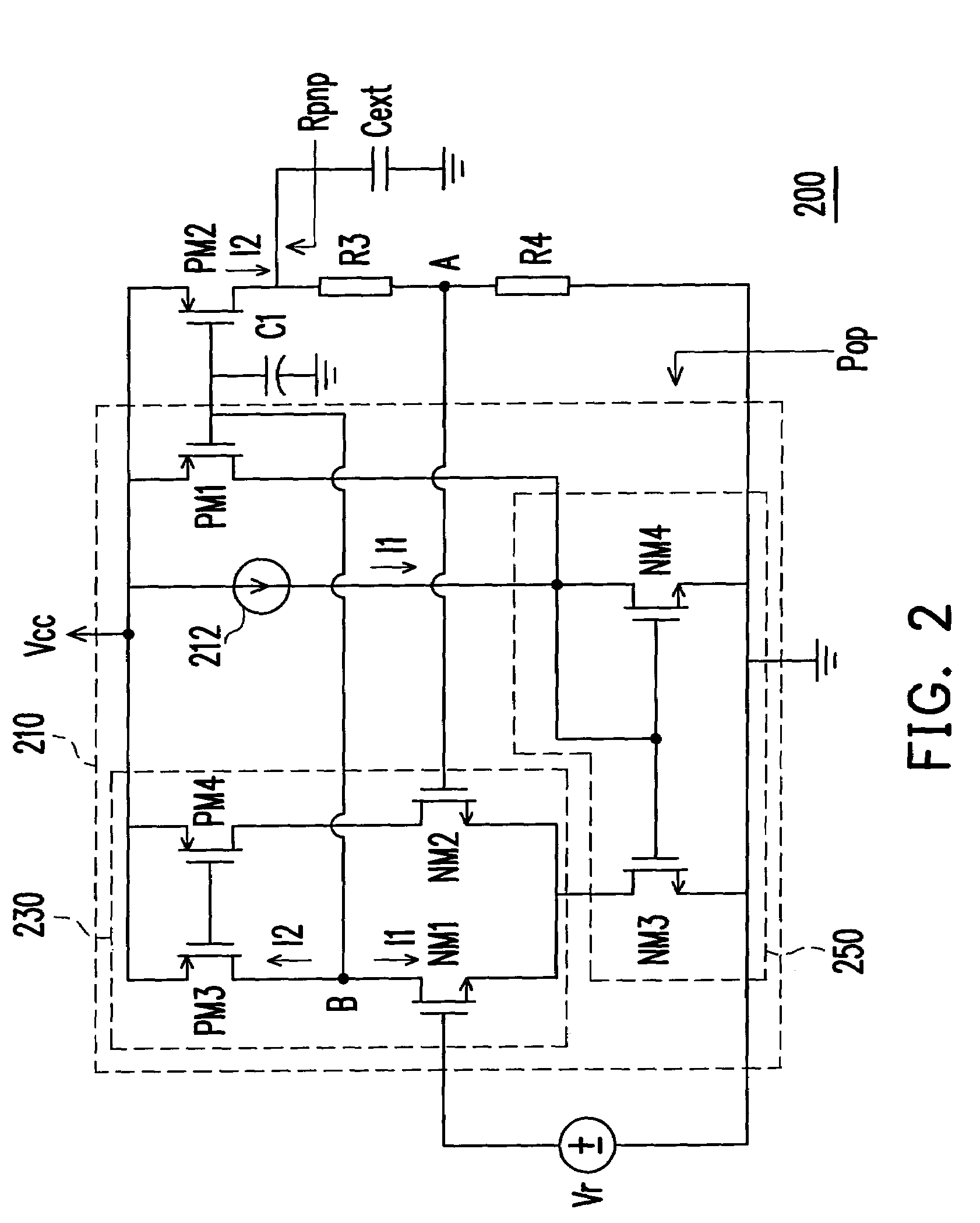Differential amplifier and low drop-out regulator with thereof
a technology of differential amplifiers and regulators, applied in the direction of electric variable regulation, process and machine control, instruments, etc., can solve the problems of difficult operation under a small current environment, significant influence on system stability, and extremely restricted application of ldo regulators b>100/b>, and achieve the effect of a larger range of output curren
- Summary
- Abstract
- Description
- Claims
- Application Information
AI Technical Summary
Benefits of technology
Problems solved by technology
Method used
Image
Examples
Embodiment Construction
[0016]FIG. 2 schematically shows a circuit diagram of a low drop-out regulator according to a preferred embodiment of the present invention. Referring to FIG. 2, in the low drop-out regulator 200, the differential amplifier circuit 210 has a positive input terminal, a negative input terminal, an output terminal, a bias terminal and a ground terminal. Wherein, the bias terminal of the differential amplifier circuit 210 is electrically coupled to a positive bias Vcc, and its ground terminal is grounded. The output terminal of the differential amplifier circuit 210 is electrically coupled to a gate of a PMOS transistor PM2; a first source / drain terminal of the PMOS transistor PM2 serially connects to the passive elements such as the resistors R3 and R4, and its second source / drain terminal is electrically coupled to the positive bias Vcc. As shown in FIG. 2, a first terminal of the resistor R3 is electrically coupled to the first source / drain terminal of the PMOS transistor PM2, and it...
PUM
 Login to View More
Login to View More Abstract
Description
Claims
Application Information
 Login to View More
Login to View More - R&D
- Intellectual Property
- Life Sciences
- Materials
- Tech Scout
- Unparalleled Data Quality
- Higher Quality Content
- 60% Fewer Hallucinations
Browse by: Latest US Patents, China's latest patents, Technical Efficacy Thesaurus, Application Domain, Technology Topic, Popular Technical Reports.
© 2025 PatSnap. All rights reserved.Legal|Privacy policy|Modern Slavery Act Transparency Statement|Sitemap|About US| Contact US: help@patsnap.com



